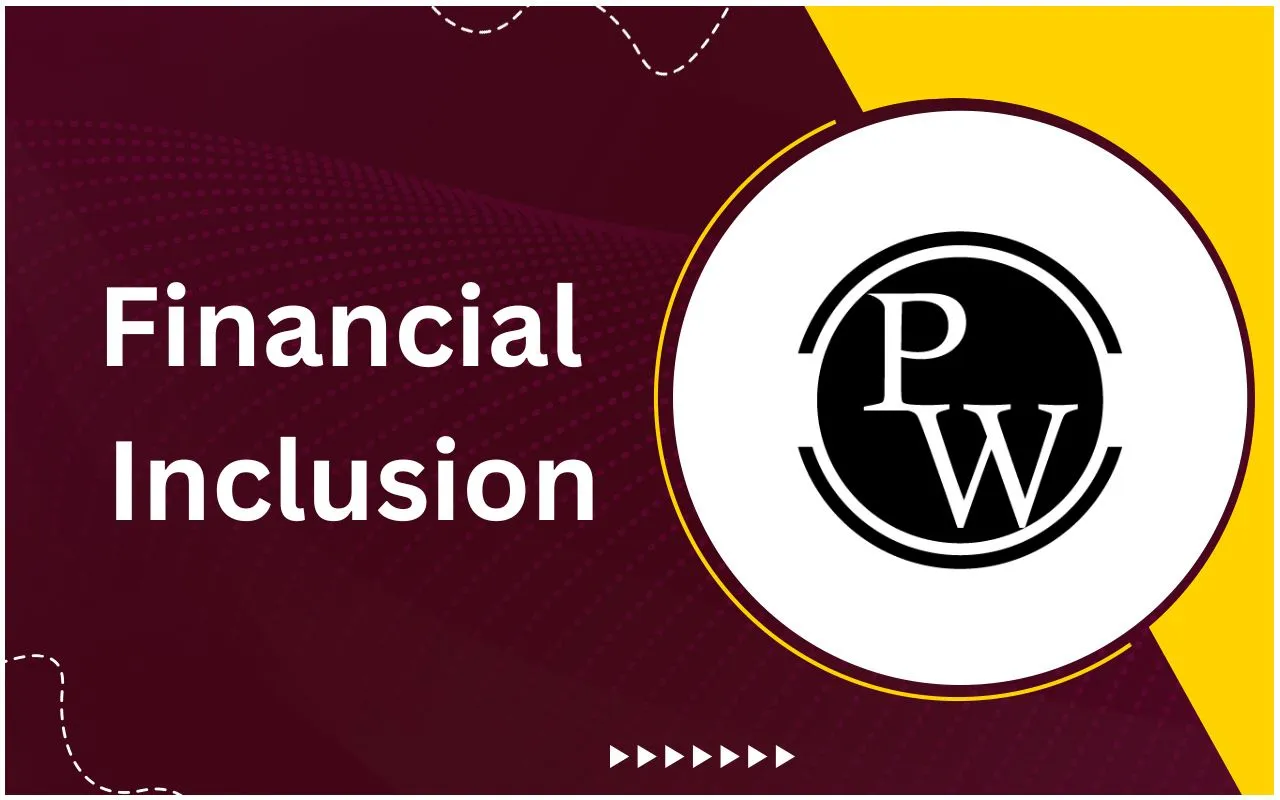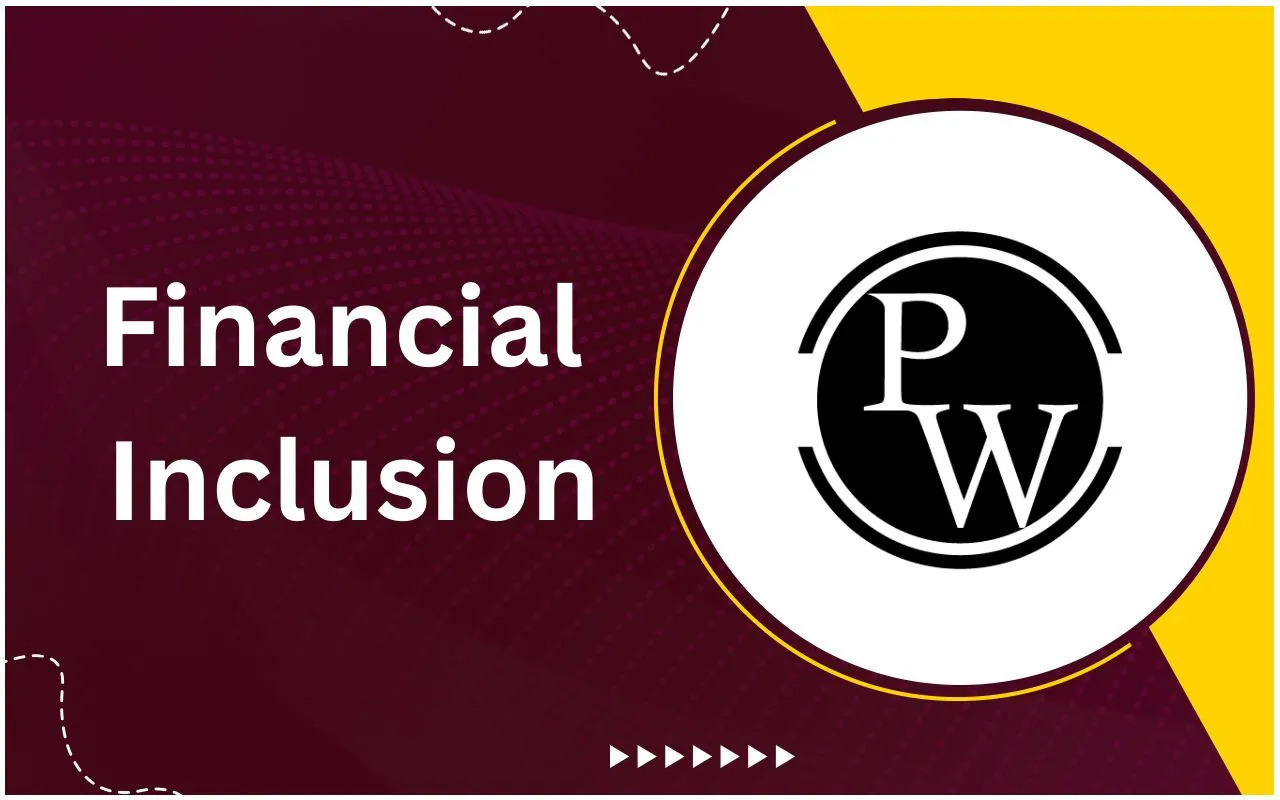

Financial Inclusion: Is financial inclusion just about opening bank accounts, or does it go beyond that? Financial inclusion means making financial services accessible and affordable for everyone, especially those in remote and low-income areas. It ensures individuals and businesses can use banking, credit, insurance, and payment services to improve their financial well-being.
The importance of financial inclusion lies in reducing poverty, fostering economic growth, and bridging financial gaps. Governments, global organizations, and private institutions support this through initiatives that promote digital banking and financial literacy.
From mobile banking in villages to microloans for small businesses, financial inclusion examples show its role in empowering communities. In this guide, we will define financial inclusion, its benefits, challenges, and schemes in India.
What is Financial Inclusion?
Financial inclusion means ensuring that everyone, regardless of income or location, can access and use affordable financial services like banking, credit, insurance, and digital payments. It helps people save, invest, and manage financial risks, improving their quality of life.
Objectives of financial inclusion include providing no-frills bank accounts, easy credit, insurance, and pension schemes, especially for low-income groups. For example, India’s Jan Dhan Yojana has helped millions open bank accounts.
Financial inclusion examples include microloans for small businesses and digital wallets for rural transactions. By bridging financial gaps, it promotes economic growth, reduces poverty, and empowers underserved communities.
How Financial Inclusion Works
Financial inclusion ensures that everyone, regardless of income or location, can access and use essential financial services like banking, credit, insurance, and digital payments. It helps people manage money, invest in education or health, and handle financial emergencies. Here’s how financial inclusion operates:
- Banking and Digital Access: Opening bank accounts and using digital wallets make transactions easier for unbanked individuals.
-
Affordable Credit and Microfinance: Small loans help businesses grow, especially for those who lack a traditional credit history.
-
Financial Literacy Programs: Educating people on managing money encourages better financial decisions.
-
Government and Fintech Support: Government policies and fintech innovations make financial services more accessible and cost-effective.
Read More - Financial Economics: Definition, Methods, and Importance
Importance of Financial Inclusion
Financial inclusion ensures that individuals and businesses, regardless of income or location, can access essential financial services such as banking, credit, and insurance. It contributes to economic growth, reduces poverty, and promotes social equity. Here are some significant benefits of financial inclusion:
1. Boosts Economic Growth: Financial inclusion allows individuals and businesses to save, invest, and access credit, fueling economic growth. When more people participate in the economy, it leads to higher productivity and an increase in national income.
For example, small businesses with access to credit can expand operations, hire more employees, and contribute to the economy.
2. Reduces Poverty and Economic Inequality: Providing access to banking and financial services helps low-income individuals manage money, build assets, and escape poverty. It also ensures that government subsidies and welfare programs reach the right beneficiaries efficiently.
For instance, direct Benefit Transfers (DBT) in India ensure that government subsidies reach the needy without middlemen.
3. Empowers Women and Marginalized Groups: Financial inclusion gives women and underprivileged communities access to financial resources, helping them gain financial independence and contribute to household and national economies.
For example, women with access to microfinance loans can start small businesses, improving their financial stability and decision-making power.
4. Encourages Entrepreneurship and Job Creation: Small businesses and startups rely on financial services to secure funding. Easy access to credit helps entrepreneurs grow their businesses, leading to job creation and innovation.
For example, many small business owners in rural areas now use digital lending platforms to secure business loans without collateral.
5. Improves Financial Stability: Access to banking services encourages saving habits and provides financial security in times of need. It also reduces reliance on informal lending sources, which often charge high interest rates.
For example, a savings account allows individuals to set aside funds for emergencies, reducing financial stress.
6. Bridges the Urban-Rural Divide: In many countries, rural populations lack access to banking facilities. Digital banking and mobile payments help bring financial services to remote areas, ensuring economic inclusion.
For instance, mobile banking apps have enabled farmers in remote areas to receive payments and access loans without visiting a bank.
7. Promotes Digital and Financial Literacy: Financial inclusion goes hand in hand with digital literacy, helping individuals understand how to use financial services effectively and securely. It also reduces fraud and financial exploitation.
For example, UPI and mobile wallets in India have made cashless transactions easy, even for those new to digital banking.
The importance of financial inclusion extends beyond individual benefits—it strengthens economies, reduces inequalities, and fosters a more inclusive society. By making financial services accessible to all, especially the underserved, we pave the way for sustainable development and economic progress.
Read More - Financial Literacy: Definition, Importance, and How to Improve It
Challenges of Financial Inclusion
Financial inclusion aims to provide access to essential financial services for all, but several challenges hinder its widespread adoption. Here are some key barriers:
1. Low Financial Awareness: Many people, especially in rural areas, lack basic financial knowledge. Without understanding how to save, invest, or access credit, they remain excluded from formal financial systems.
For example, some individuals may avoid banking due to unfamiliarity with digital transactions.
2. Limited Digital Access: Many rural and low-income communities face connectivity issues, lack smartphones, or struggle with digital literacy. This gap makes it difficult for them to use online banking, UPI, and other digital payment options.
3. Gender Disparities: Women often face greater challenges in accessing financial services due to social norms, mobility restrictions, and limited financial independence. For instance, in some regions, women may need male approval to open a bank account, further limiting their financial inclusion.
4. Lack of Banking Infrastructure: Remote areas often have fewer bank branches, ATMs, or financial service providers. People in such regions may need to travel long distances just to access basic banking services, making financial inclusion difficult.
5. High Costs of Services: Many financial products, such as loans and insurance, come with high interest rates, processing fees, and hidden charges. These costs discourage low-income individuals from using formal financial services.
6. Data Privacy and Security Concerns: With the rise of digital banking, concerns about data protection and financial fraud have increased. Many people hesitate to use online financial services due to fears of scams or misuse of personal information.
Addressing these challenges requires better financial education, improved digital access, gender-inclusive policies, and stronger consumer protection measures.
Top Financial Inclusion Schemes in India
The Indian government has introduced several schemes to promote financial inclusion by ensuring access to banking, credit, insurance, and pension services for all, especially marginalized communities. Here are some major initiatives:
1. Pradhan Mantri Jan Dhan Yojana (PMJDY)
Launched in 2014, PMJDY is a nationwide initiative to provide every household with a bank account. The scheme offers:
- Zero-balance savings accounts with RuPay debit cards.
-
Overdraft facility of up to ₹10,000.
-
Accidental insurance of ₹2 lakh.
-
Direct Benefit Transfers (DBT) for government subsidies.
2. Pradhan Mantri Jeevan Jyoti Bima Yojana (PMJJBY)
A life insurance scheme for individuals aged 18-50 years with a bank account. Features include:
- Annual coverage of ₹2 lakh for a premium of ₹436 per year.
-
Renewable every year, ensuring financial security for families.
3. Pradhan Mantri Suraksha Bima Yojana (PMSBY)
An accident insurance scheme for individuals aged 18-70 years. Key highlights:
- Coverage of ₹2 lakh for accidental death or disability.
-
Annual premium of ₹20, making it affordable for low-income groups.
4. Atal Pension Yojana (APY)
A pension scheme for workers in the unorganized sector. It provides:
- Monthly pension options range from ₹1,000 to ₹5,000 after retirement.
-
Government contribution for eligible subscribers.
5. Pradhan Mantri MUDRA Yojana (PMMY)
Introduced in 2015 to support small businesses and entrepreneurs, this scheme offers:
- Loans up to ₹10 lakh under three categories:
-
-
Shishu (up to ₹50,000)
-
Kishor (₹50,000 to ₹5 lakh)
-
Tarun (₹5 lakh to ₹10 lakh)
-
-
Encourages self-employment and business growth.
6. Kisan Credit Card (KCC)
A scheme designed for farmers to access affordable credit for agricultural needs. Features include:
- Low-interest loans for crop production, equipment, and other expenses.
-
Flexible repayment options based on harvest cycles.
These schemes have significantly contributed to financial inclusion in India by improving access to essential financial services and empowering economically weaker sections of society.
Furthermore, financial inclusion supports economic growth by providing access to banking, credit, and insurance for all. For finance professionals, understanding it is essential to develop effective policies, services, and products that expand financial access and strengthen the overall financial system.
Develop Practical Financial Skills with PW Financial Modeling Course
The PW Financial Modeling Course with Deloitte Academy helps learners build practical skills in financial analysis, budgeting, forecasting, and investment decision-making. This 3-month live program covers real-world case studies and hands-on projects, enhancing financial inclusion knowledge. Sign up for the PW Financial Modeling Online Course and enhance your financial skills today!
FAQ
What is the meaning of financial inclusion?
What are the main objectives of financial inclusion?
Why is financial inclusion important?
What are some examples of financial inclusion?
What are the top benefits of financial inclusion?













